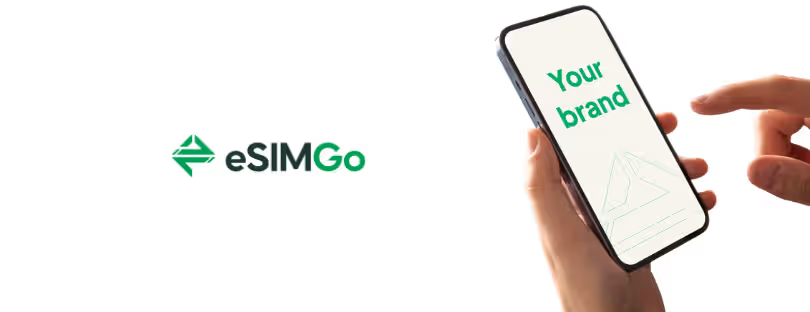
Unlock Your Phone’s Potential: Finding the Best eSIM for the USA
An embedded SIM card, or eSIM, is a new technology that allows you to activate a cellular plan from your carrier without having to use a plastic SIM card. With an eSIM, the SIM chip is embedded directly into the device. best esim for the United States
eSIMs are becoming increasingly popular, especially among frequent travelers and those who switch between devices regularly. Instead of swapping out physical SIM cards, you can download and manage multiple cellular plans digitally with an eSIM.
The goal of this article is to recommend the best eSIM option for travelers in the United States. As a top travel technology advisor, we evaluate the major eSIM providers available based on pricing, network coverage, plan flexibility, and ease of use. Read on for our recommendation on the best eSIM for hassle-free connectivity across the US.
Benefits of eSIMs
eSIMs offer several advantages over traditional physical SIM cards:
-
Convenience of not needing multiple SIM cards – With an eSIM you don’t need to carry around multiple SIM cards or open up your device to swap them out. eSIMs allow you to digitally switch between plans and providers.
-
Ability to easily switch between plans and providers – eSIMs make it quick and easy to change your mobile plan or provider on the fly as needed. You can add, remove or switch plans and providers directly from your phone’s settings.
-
Remote provisioning of plans – eSIM allows mobile plans to be purchased and provisioned remotely without having to acquire a new physical SIM card. Plans can be added to your eSIM over-the-air via the provider’s app or website.
eSIM Providers in the US
With eSIMs still a relatively new technology in the United States, there are currently only a few major wireless carriers that offer eSIM services to consumers. Here is a brief overview of the top eSIM providers in the US along with coverage map comparisons:
Google Fi
Google Fi relies on T-Mobile and U.S. Cellular towers to provide its cell and data coverage. It offers coast-to-coast LTE coverage and access to over 2 million secure WiFi hotspots across the U.S. Google Fi is currently compatible with phones such as the Pixel 3, iPhone XS/XR, and Samsung Galaxy S20 series, among others.
T-Mobile
T-Mobile has rolled out eSIM support on all iPhone XS, iPhone XS Max, and iPhone XR models, along with Google Pixel. T-Mobile claims over 325 million people are covered by its LTE network in the U.S. T-Mobile also has roaming agreements in place to extend coverage.
Verizon Wireless
Verizon has launched eSIM support for the Google Pixel and the latest iPhones. Big Red claims its 4G LTE network covers 328 million people which represents just over 99% of Americans. Verizon also has roaming agreements to fill coverage gaps.
AT&T
AT&T offers eSIM services, enabling customers to enjoy the flexibility of having a digital SIM card for compatible devices, allowing for seamless activation and management of cellular plans.
In terms of coverage, Verizon and T-Mobile are neck-and-neck while Google Fi lags behind slightly given its reliance on partner networks. However, Google Fi tends to be more affordable than the major carriers. Ultimately, the right eSIM provider comes down to your specific coverage needs and budget. Be sure to check carrier coverage maps for your frequent locations before choosing.
Pricing Considerations
When evaluating eSIM plans, pricing is an important factor to consider. Here are some key pricing considerations to keep in mind:
-
Cost of eSIM plans from different providers – Prices can vary significantly between different eSIM providers. For example, Google Fi eSIM plans start at $20/month for unlimited talk and text + 6GB of data while Verizon eSIM plans to start at $30/month for the same features. Comparing pricing across providers is important.
-
Data-only vs voice & data pricing – Some eSIM providers like Airalo offer data-only plans, while others like T-Mobile have voice and data bundles. Data-only plans are usually cheaper than combined plans. If you only need data, data-only eSIMs can save money.
-
Short-term vs long-term pricing – eSIM providers offer both short-term plans (e.g. 1 week) and long-term plans (e.g. 1 month or 1 year). Short-term plans are more expensive per GB but offer flexibility. Long-term plans offer better value but require a longer commitment. Consider your needs.
Evaluating cost across these different factors will help identify the most budget-friendly eSIM plan for your requirements. Be sure to read the fine print and compare the total cost, not just the upfront monthly fee.
Important eSIM Features
eSIMs provide several important capabilities beyond those of traditional physical SIM cards. Here are some of the most notable eSIM features:
Remote Provisioning
One of the biggest advantages of eSIMs is the ability to provision service remotely without having to physically insert a new SIM card. This allows users to quickly and easily activate or switch between service plans and carriers. eSIM profiles containing network credentials can be downloaded over-the-air.
Multi-Network Support
eSIMs also enable multi-network support on a single device. With an eSIM, users can store multiple profiles from different carriers and switch between them through software. For example, they could have a data plan through one provider and a separate cellular plan through another. eSIMs allow easy toggling between these plans.
Enhanced Security
eSIMs offer extra security because sensitive information is not stored on a physical card that could be stolen. The cryptographic credentials are stored on a tamper-resistant embedded chip instead of a removable card. This helps prevent cloning and other attacks common with traditional SIM cards.
Top Pick: Google Fi
Google Fi is our top pick for eSIM service in the US due to its flexible and affordable plans, excellent network coverage, and seamless international roaming capabilities.
Pricing
Google Fi’s pricing is simple and easy to understand. Plans start at €20 per month for unlimited calls and texts, plus €10 per GB of data used. So a plan with 3GB of data would cost €50 per month. Data is free after 6GB of use per month. Additional data-only SIMs can be added for €10 per month. Family plans are available to combine multiple lines and reduce the per-GB price.
Network Coverage & Performance
Google Fi utilizes multiple 4G LTE networks in the US: T-Mobile and US Cellular. By intelligently switching between these networks, coverage is excellent throughout the country. Speeds are consistently fast and reliable even when traveling or in rural areas, removing worries about poor signal. Independent testing shows Fi matching or exceeding the speeds of single network providers.
Flexible Switching
With Fi’s multi-network access, you can take advantage of whichever network has the best service at your location. The service intelligently hops between networks to maintain the best signal. As you move around, your phone effortlessly transitions without dropping your connection.
International Roaming
A major benefit of Google Fi is free international data and text roaming in over 200 countries at no extra charge. High-speed LTE data is provided up to 22GB per month abroad before throttling. Calls are €0.20 per minute when roaming internationally. This makes Fi the ideal solution for frequent travelers or those who need overseas communication.
Alternative #1: T-Mobile
T-Mobile is another top option for getting an eSIM in the United States. Here’s an overview of their eSIM pricing and plans:
-
T-Mobile offers both postpaid and prepaid plans with eSIM compatibility. Postpaid plans start at €20/month for unlimited talk and text and 5GB of data. Prepaid plans start at €10/month for unlimited talk and text with 2GB of data.
-
For an additional €10-15/month, you can get unlimited data with postpaid plans. With prepaid, unlimited data starts at €50/month.
-
T-Mobile provides broad 4G LTE coverage across the US, with over 310 million people covered. Their 5G network is also rapidly expanding.
Compared to Google Fi, T-Mobile has some advantages and disadvantages:
Pros
- Generally cheaper monthly rates, especially for unlimited data
- Wider domestic network coverage
- More plan options and perks like free Netflix
Cons
- No built-in international coverage – add-ons required
- Data speeds may be slower than Google Fi in some areas
- Fewer additional features like data-only SIMs
So T-Mobile is a great option if you want an affordable eSIM with wide domestic network coverage. But Google Fi excels for international travel and provides a seamless connectivity experience.
Alternative #2: Verizon
Verizon offers eSIM support on a wide range of devices including iPhone XS, XS Max, and XR models. Their eSIM plans allow you to activate service without a physical SIM card.
Verizon’s eSIM pricing starts at $40 per month for a single line on their Start Unlimited plan. This includes unlimited talk, text, and data but with reduced speeds and video streaming quality. For better quality streaming and 5G access, their Do More and Play More plans start at $50 and $60 per month, respectively.
When it comes to coverage, Verizon offers robust LTE coverage across the country, with its 4G network covering over 2.61 million square miles. They also have the largest 5G network, which is now available in over 1,700 cities. This gives Verizon an edge in rural areas compared to some other carriers.
Compared to Google Fi, Verizon has wider domestic coverage but is more expensive. Fi’s flexibility and international coverage make it more affordable for light-data users or frequent travelers. However, Verizon offers faster full-speed data limits and higher-quality streaming. For heavy data users who value performance over price, Verizon could be worth the premium.
The pros of Verizon are their industry-leading network coverage and fast 5G speeds. The downside is the higher monthly costs, especially for multi-line plans. Their plans also lack some of the flexibility of Google Fi like pausing service or daily billing. But frequent U.S. travelers who need reliability across states may find Verizon the best fit overall.
If you are visiting the United States, here are some of the best US prepaid eSIM prices:
FAQs About eSIMs
How do I get an eSIM?
Most newer phones have eSIM capabilities built-in. To obtain an eSIM, contact your carrier to see if they support eSIM activation. If so, they will walk you through the process of scanning a QR code or downloading a carrier profile to set up your cellular plan over-the-air.
Can I use eSIM with multiple carriers?
Yes, one of the benefits of eSIM is the ability to digitally switch between carriers and plans easily. For example, you could have your regular cellular plan on an eSIM and then a separate travel data plan on a secondary eSIM when traveling abroad.
Is an eSIM secure?
eSIMs offer the same level of security as regular SIM cards. All data is encrypted between the eSIM and the carrier network. As long as you use proper precautions like strong passwords, an eSIM is quite secure.
How do I transfer my number to eSIM?
To transfer your number, contact your carrier to see if they support number transfers to eSIM. If so, they will give you instructions on how to initiate the transfer process through their website or app. The process is very similar to transferring to a new physical SIM card.
Can I switch back to a regular SIM card?
Yes, you can switch back to a regular nano-SIM card at any time if needed. Your carrier will provide instructions on how to revert back and transfer your number if necessary.
Conclusion best esim for the United States
Embedded SIM (eSIM) technology is quickly gaining traction, offering a convenient and versatile alternative to traditional physical SIM cards. For travelers in the United States, eSIMs provide seamless connectivity and flexibility, allowing you to enjoy affordable plans, reliable coverage, and effortless switching between carriers.














